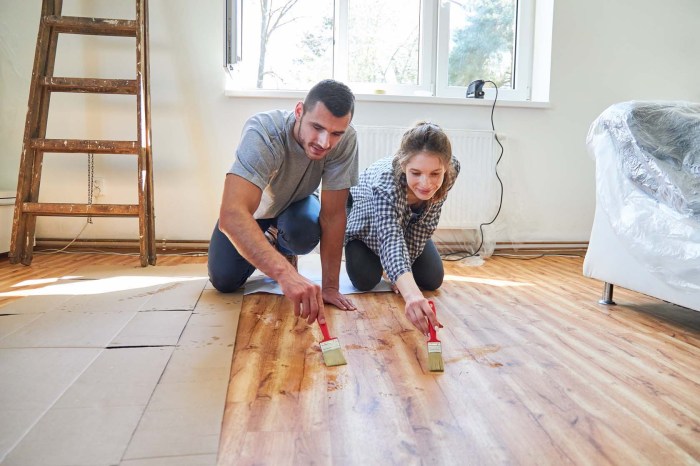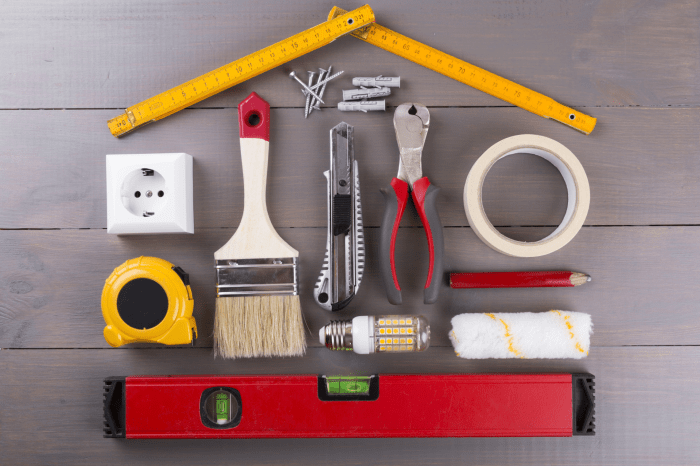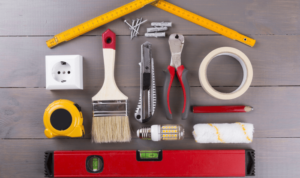DIY Home Improvement sets the stage for unleashing your inner creativity and transforming your living space into a personalized haven of style and functionality. From cost-saving advantages to a sense of accomplishment, this journey will empower you to take charge of your home projects like a boss.
Whether you’re painting a new color palette, installing trendy shelves, or tackling that flooring project, get ready to dive into the world of DIY with confidence and flair.
Benefits of DIY Home Improvement
Many homeowners choose to do home improvement projects themselves for several reasons.
One of the main benefits of DIY home improvement is the cost-saving advantage it offers. By taking on projects yourself, you can avoid labor costs and markups on materials, ultimately saving you money in the long run.
Sense of Accomplishment and Pride
Completing DIY home improvements can bring a sense of accomplishment and pride. Seeing the results of your hard work and knowing that you were able to transform your space with your own two hands can be incredibly rewarding.
Popular DIY Home Improvement Projects

When it comes to popular DIY home improvement projects, there are several tasks that homeowners can tackle on their own to spruce up their living space without breaking the bank. From painting walls to installing shelves or laying flooring, these projects can make a big difference in the overall look and feel of a home.
Painting
One of the most common DIY home improvement projects is painting. Whether you’re looking to freshen up a room with a new coat of paint or add a pop of color to an accent wall, painting is a relatively easy and cost-effective way to transform a space. The steps involved in painting include:
- Prepping the walls by cleaning and sanding any imperfections
- Taping off trim and edges to ensure clean lines
- Priming the walls if needed
- Applying the paint in even strokes
- Allowing the paint to dry before applying a second coat if necessary
Tools and materials needed for painting projects typically include paint, brushes or rollers, painter’s tape, drop cloths, sandpaper, and primer.
Installing Shelves
Another popular DIY project is installing shelves to create extra storage or display space. Whether you’re adding floating shelves in a living room or installing a new shelf in the bathroom, the steps involved in installing shelves include:
- Measuring and marking where the shelves will be installed
- Using a level to ensure the shelves are straight
- Attaching brackets or cleats to the wall
- Placing the shelves on the brackets or cleats
- Securing the shelves in place
Tools and materials needed for installing shelves typically include a tape measure, level, drill, screws, anchors, brackets, and the shelves themselves.
Laying Flooring, DIY Home Improvement
For homeowners looking to upgrade their floors, laying new flooring is a popular DIY project that can make a big impact. Whether you’re installing laminate, hardwood, or tile flooring, the steps involved in laying flooring include:
- Measuring and preparing the subfloor
- Cutting and laying the underlayment
- Installing the flooring according to the manufacturer’s instructions
- Adding trim and transitions as needed
- Sealing or finishing the floors for added durability
Tools and materials needed for laying flooring can vary depending on the type of flooring being installed, but typically include a measuring tape, underlayment, flooring material, a saw, spacers, a hammer, and nails or adhesive.
Safety Tips for DIY Home Improvement

When engaging in DIY home improvement projects, safety should always be a top priority to prevent accidents and injuries. Here are some important guidelines to ensure a safe working environment:
Importance of Protective Gear
It is crucial to wear the necessary protective gear while working on DIY projects. This includes goggles to protect your eyes from dust, debris, and harmful chemicals, as well as gloves to safeguard your hands from sharp objects and materials.
Proper Handling of Tools
– Always use tools in the manner they were intended for, following the manufacturer’s instructions and guidelines.
– Keep tools clean, sharp, and in good condition to prevent accidents and ensure optimal performance.
– When using power tools, make sure to unplug them when not in use and handle them with care to avoid electric shocks.
– Store tools in a safe and organized manner to prevent tripping hazards and accidents in the workspace.
Sustainable DIY Home Improvement
When it comes to DIY home improvement projects, incorporating sustainable practices can not only benefit the environment but also save you money in the long run. By opting for eco-friendly options and reducing waste, you can create a more environmentally friendly home while adding your personal touch to the space.
Upcycling and Repurposing Materials
Repurposing materials is a great way to reduce waste and give new life to old items. Instead of throwing away old furniture or decor pieces, consider upcycling them into something new and unique. For example, you can repurpose old wooden pallets into a stylish coffee table or transform mason jars into chic storage containers. Get creative and think outside the box to find new uses for items that would otherwise end up in a landfill.
Reducing Environmental Impact
When embarking on DIY projects, be mindful of the materials you use and their environmental impact. Opt for sustainably sourced materials, such as reclaimed wood or bamboo, which are renewable and eco-friendly. Additionally, consider using low VOC (volatile organic compound) paints and finishes to minimize indoor air pollution. By making conscious choices about the products you use, you can create a healthier home environment for you and your family.










